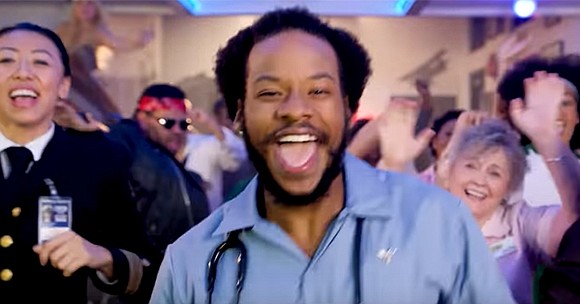Contagious Video of 1970’s Hit Song Spreads Awareness of Stroke Signs
American Stroke Association releases a Y.M.C.A parody song to educate about stroke
Style Magazine Newswire | 10/20/2017, 11:07 a.m.
Dallas, TX — A new parody music video is teaching diverse populations and generations across the country to recognize the most common stroke warning signs. The YouTube sensation was created by the American Heart Association/American Stroke Association, the world’s leading voluntary health organization devoted to fighting cardiovascular disease and stroke.
Stroke is a leading cause of death and disability. African Americans are most likely to die from stroke. For the American Stroke Association, raising awareness of stroke is more critical than ever, as new reports indicate that stroke deaths are on the rise.
The song is a parody of the well-known Y.M.C.A song from the 70’s. It features a person having a stroke in a diner and the patrons and staff singing about the acronym F.A.S.T., an easy way to teach people the most common stroke warning signs and to call 9-1-1 during a stroke emergency.
“The majority of stroke patients still do not arrive at the Emergency Department quickly enough to receive the care that can dramatically improve their outcomes, in large part because they or those around them do not recognize the warning signs and the importance of calling 9-1-1,” said Dr. Mitchell Elkind, chair of the American Stroke Association and professor of Neurology and Epidemiology at Columbia University. “The song is intended to be a lighthearted way of helping people remember F.A.S.T. and to encourage them to call 9-1-1 when someone is experiencing any stroke symptoms.”
The acronym F.A.S.T. stands for:
* Face Drooping: Does one side of the face droop or is it numb? Ask the person to smile. Is the person’s smile uneven?
* Arm Weakness: Is one arm weak or numb? Ask the person to raise both arms. Does one arm drift downward?
* Speech Difficulty: Is speech slurred? Is the person unable to speak or hard to understand? Ask the person to repeat a simple sentence, like “The sky is blue.”
* Time to Call 9-1-1: If someone shows any of these symptoms, even if the symptoms go away, call 9-1-1 and get to a hospital immediately. (Tip: Check the time so you’ll know when the first symptoms appeared.)
“With today’s advanced technology, stroke is more treatable than ever before,” said Lee H. Schwamm, M.D., executive vice chair of Neurology at Massachusetts General Hospital and American Stroke Association spokesperson. “There are treatments that can help significantly reduce disability and even death in a stroke emergency. Some treatments include drugs that can help dissolve blood clots and medical devices that can remove the clots — but there’s a narrow window of time in which a person can receive treatment.”
“When it comes to a stroke emergency, one thing always remains true – urgency in calling 9-1-1 is critical. There is no technology that can substitute for time loss. Without oxygen-rich blood, brain cells die. Time loss is brain loss. Receiving immediate, professional help can get you the immediate treatment to greatly improve recovery outcomes,” said Schwamm.
Education about F.A.S.T is a part of the American Stroke Association’s Together to End Stroke initiative, nationally sponsored by Medtronic. Together, the two organizations aim to help people to easily recognize the stroke warning signs to improve stroke outcomes.
For more information and to find a complete list of the stroke warning signs, visit www.StrokeAssociation.org.








